Derry artist and civil rights activist Sheila McClean's works to go up for auction at Ross’s
and live on Freeview channel 276
Some 350 lots spanning the artist’s painting career will be sold next week in an online auction at Ross’s Belfast rooms.
The sale forms part of Ross’s events celebrating their centenary.
Advertisement
Hide AdAdvertisement
Hide AdSheila McClean was born in Moville, County Donegal. Her father was a bus driver, and her mother was a house decorator.
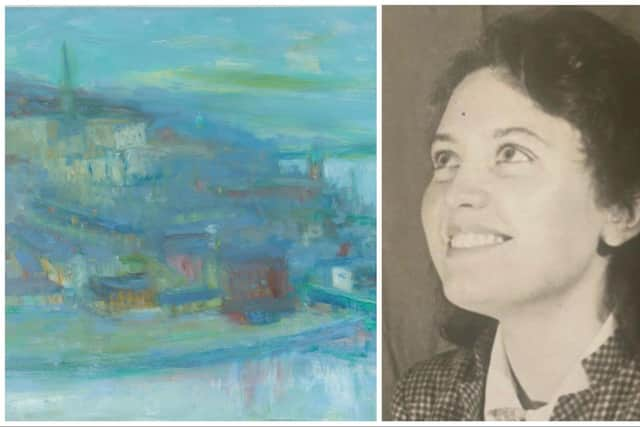

Her parents moved to Derry shortly after their marriage, where they raised Sheila and her seven younger siblings. She attended St. Eugene’s primary school and Thornhill College in Derry before pursuing an education in fine art.
In spite of holding generous offers from both St Mary’s Training College and Queen’s University, Sheila ultimately chose to attend Belfast College of Art, facing disapproval from her parents and her secondary school principal for its limited funding and lack of degree qualification.
McClean was taught by Romeo Charles Toogood, alongside fellow students, Basil Blackshaw and Cherith McKinstry.
Her early art education was impactful, not only in finding her artistic style, but also in her initial years as a teacher.
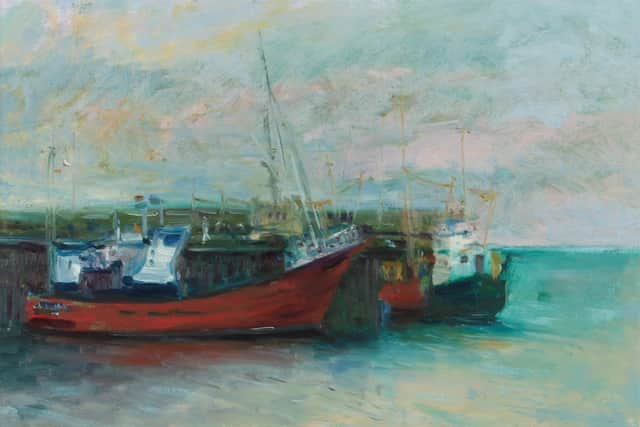

Advertisement
Hide AdAdvertisement
Hide AdToogood’s loose and informal approach to representing the visible world, through naturalistic tones and impressionistic brushstrokes, would later prove significant in McClean’s bold and atmospheric studies of the Irish countryside.
After receiving a Diploma of Fine Art in 1955 and an Art Teachers Diploma in 1956, she began teaching art classes at Rathmore Convent, Belfast, Lisburn Convent, Strabane Convent and her alma mater, Thornhill College, where she became Head of Art.
McClean’s first commission was to paint the Stations of the Cross for the church of St. Pius X in Moville, an early example of her artistic commitment to the local places she knew and visited.
Returning to Derry in the early 1960s, Sheila and her husband SDLP politician, Dr. Raymond McClean, began raising their young children, Sheila and Sean. In 1968, McClean was asked to join the civil rights organising committee to design their oak leaf logo; her involvement in the committee represented a significant shift in introducing gender equality as an issue of civil rights.
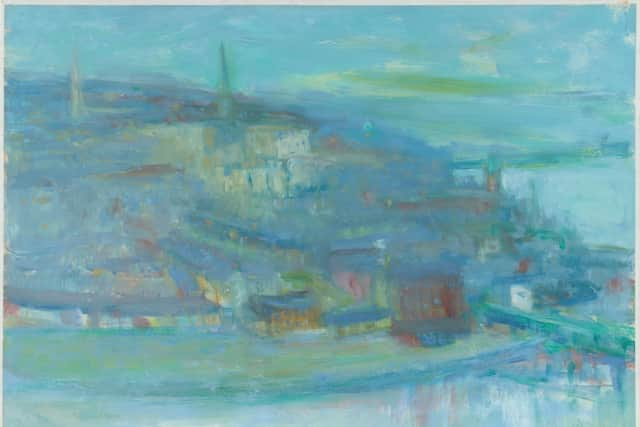

Advertisement
Hide AdAdvertisement
Hide AdAs an artist, it would not be until 1981 that McClean would pursue painting full-time and exhibit regularly.
Past President of the Royal Ulster Academy, Joseph McWilliams, described her as ‘the Greta Garbo of Ulster art because her work was seldom seen but much sought after.’
Notable group shows include the Royal Ulster Academy annual exhibition (from 1981), the Royal Hibernian Academy annual exhibition (from 1989), and the Banquet exhibition (1993). In 1989, she was awarded Associate member of the Royal Ulster Academy.
Her work was included in the ‘Up & Coming’ exhibition (1993) at Sligo Art Gallery and was exhibited alongside Colin Davidson and Catherine McWilliams at the ‘Basil Blackshaw & Friends’ exhibition (2000).
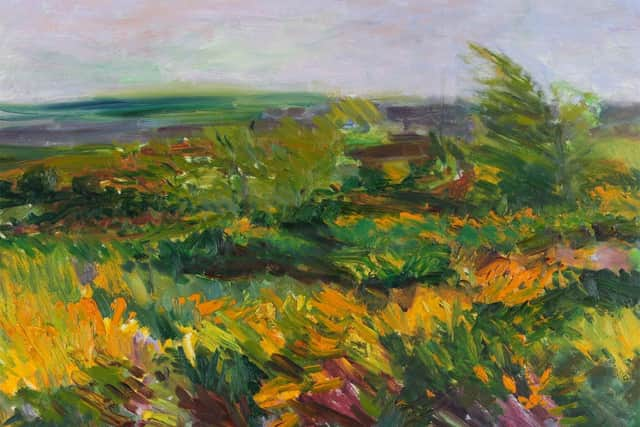

Her solo exhibitions include the Gordon Gallery, the Cavehill Gallery, and Arts Club Gallery.
Describing her process of painting as ‘personal rather than purely descriptive, to preserve the life and integrity of the paint itself’, landscape views became significant studies of self-expression for McClean.
Advertisement
Hide AdAdvertisement
Hide AdShe drew upon a nostalgia for childhood freedom and liberty through her evocative understanding of the personal relationship between paint and place. Sheila often painted en plein air to capture the moving weather and changing atmosphere of fields, hills, bogs, piers, and coastlines across Inishowen, Moville, and Ballymagan.
For her celebrated solo exhibition at the Cavehill Gallery (2005), the Belfast Telegraph reported: ‘McClean brings the paint to life and in turn the paint enlivens the landscape.’ Her attention to emotive value in textural and impressionistic brushstrokes was applauded by Derek Hill as ‘her paintings capture the Donegal we all feel in retrospect.’ Her work is included in the National Self-Portrait Collection, Derek Hill Collection, Unison Collection, and The Thomas Haverty Trust, along with numerous private collections spanning Ireland, Great Britain, the United States, New Zealand, Australia, Holland and Germany.
This extensive studio sale represents the evolving styles of McClean, along with her attentive use of emotive colour and movement.
The catalogue reviewed by Dickon Hall states: “Sheila McClean’s work will be a fascinating rediscovery for many and a discovery for some. Born in 1932, an exact contemporary of Basil Blackshaw, she belongs in that generation of Ulster artists for whom painting the landscape was clearly inspired by emotional engagement as well as creative experiment.
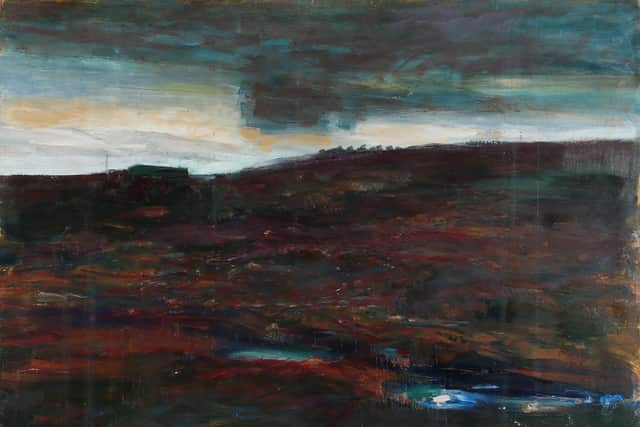

"The remarkable dynamism and energy of Sheila McClean’s work places her within the late twentieth century landscape tradition carried on by her contemporaries at Belfast College of Art, such as Blackshaw and T. P. Flanagan, which followed on from the pioneering work of one of her teachers there, Colin Middleton.
Advertisement
Hide AdAdvertisement
Hide Ad"Her landscapes avoid the picturesque, but are often irresistibly engaging. The windswept roadside trees and vegetation of Going to Grianan, Inishowen, (Lot 32) or the rain dissolving the view of houses on a hillside in Derrybeg (Lot 40) are as much about the artist’s lived experience of landscapes that she knew well, as they are about the visual appearance of a certain place, although she often seizes upon the striking visual effect of a moment of particular light or weather. The Ditch (Lot 65) is a luminous glimpse that transcends an everyday subject, much as House & Shed (Lot 108) recalls some Blackshaw paintings of the early 1950s, in which farmhouses and outbuildings and the bare landscape around, take on an ambiguous mood, with a suggestion of deeper significance.
“Sheila McClean’s paintings capture emotion expressively but never with excess. While her style is distinctive there is never a sense that she fell into habits or any formula in her painting. Her skies are full of movement and reflect the equally vivid and active description of the landscape beneath, providing unity of handling across the composition. Sometimes she adopts an aerial perspective, setting up repeated patterns that can also be related to the more abstract works included in this group, which break down the landscape with a more rigorous pictorial approach.
"Her work demonstrates an instinctive compositional sense, whether taking on a sweeping view through an extensive Donegal landscape, or a more specific motif such as boats in harbour. Sheila McClean’s own insistence on remaining aware of ‘the integrity of the paint itself’, and the intense involvement in a moment that she can achieve, recalls another celebrated painter of Donegal, Melita Denaro.
"Sheila McClean’s intuitive response to the mood of a place and her own experience of a landscape she knew well, make her work continually absorbing and stimulating.”